#Vavuskabooks
Text

#vavuskapakage#Vavuskabooks#galaxy stern#darlington#daniel arlington#pamela dawes#Dawes#tripp helmuth#Tripp#alex x darlington#Dawes x Tripp#Tripp x Dawes#leigh bardugo#hell bent leigh bardugo#ninth house#Ninth house Leigh bardugo#horror books#fantasy books#2023 books#alex stern#bookblr#book memes#hell bent
236 notes
·
View notes
Text
Some guys just can't stay away from cults....
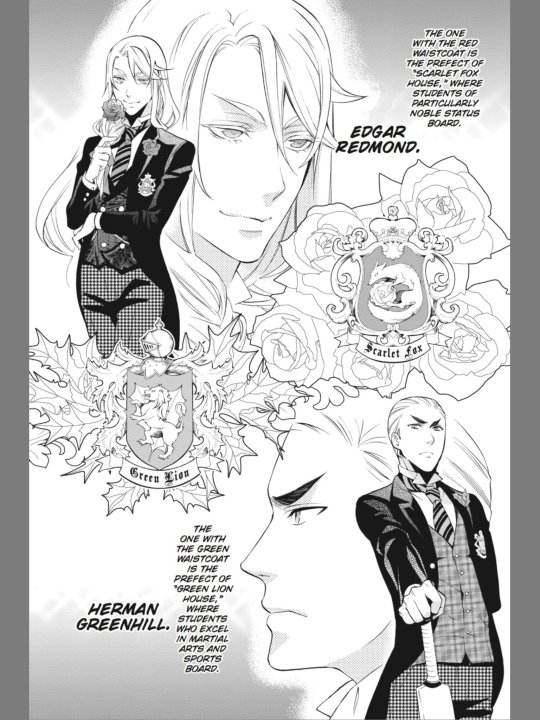
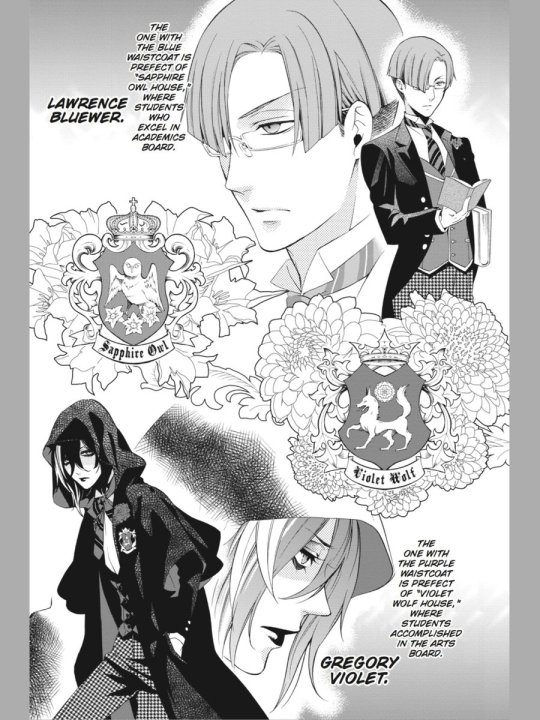

Commonly known as P4, Edgar Redmond (Red House), Lawrence Bluewer (Blue House), Herman Greenhill (Green House), and Gregory Violet (Purple House) were Prefects at prestigious public school Weston College (Black Butler — 黒執事 Kuro shitsuji, Chapters from Chapter 67 to 87)

In Chapter 111 and 112 we discovered that former P4, repented for their actions and tried to change their lives....joining a cult!
Black Butler — 黒執事 Kuro shitsuji, Chapter 112. "That Butler, Soloing" (その執事、独唱, "Sono Shitsuji, Dokushō")
#vavuskapakage#vavuskabooks#manga panel#manga and stuff#black butler#kuroshitsuji#Lawrence Bluewer#Gregory Violet#herman greenhill#Edgar Redmond#black butler manga
42 notes
·
View notes
Text
Books similar to The Handmaid's Tale by Margaret Atwood:
The Grace Year by Kim Liggett and Extasia by Claire Legrand are both distopyas dense of religious fanatism and women's segregation, in which sexism and sexual prejudice are associated with various aspects of religion (e.g. belief, faith, and fundamentalism). This novel shows also how higher religious fundamentalism is associated with internalized misogyny and passive acceptance of traditional gender roles, and both hostile and benevolent sexism.
In The Grace Year the stereotype of a women as source of sin was laid down by the dominant religious authorities before the inception of widespread violence led by women against women, but after all the violence and blood, women learn the importance of sorority, female friendship and start to support and help each others.
The main source of conflicts are ribbons, which, in The Grace Year, are the sign of a women lifestage and the bride's ribbon is a valued price among most of the girls of the age of Tierney, the protagonist. The bride ribbons create a
competition between girls to get bachelor’s attention, self-objectification, and
humiliation toward each others. Although the competition eventually destroys most of them, this
characteristic offers pleasure to those who survived their Grace Year. Tierney learns to survive on her own, learns that the religious values she was thought were wrong and learns also to appreciate her peer's friendship.
Extasia adds witchcraft and supernatural elements, but the main character (Amity) believes deeply in social conservatism—Amity has a preference for stability, conformity and the status quo— which is often a key trait of the religious experience, but also betrays deep feeling of self-hate.
In Extasia, the very patriarchal structures that decry witchcraft – the Puritan church in which the characters lives in and escapes from, the male headship to which the community so desperately cling, the insistence, in the face of repeated violence, on the sin of her mother – are the same structures that inevitably foreclose the options of the lead character, Amity.
To this two, I will mention also The Year Of The Witching by Alexis Henderson. In this novel, Immanuelle, a young woman living in a rigid, puritanical society, discovers dark powers within herself. This book is very similar to Extasia, but not such as good: Amity character is way more believable than Immanuelle and shows way more comprehension of the injustices committed in the name of the religion. The cult in Extasia contains more original elements and believing than the one in The Year Of The Witching, which seems more a copy-paste of mormon radical close-communities, including the elements of racial prejudice. Both Immanuelle and Amity live in the disdain of their own community because of the sins committed by their mother, which were both punished for their love affairs, but when Amity is a girl-of-action and actively search for mercy and witchcraft, Immanuelle is cursed - literally - by passivity and events occurs without her active consents, including the defection of the evil antagonist. Also, female friendship doesn't take place among the main themes and the book suffer a lot of the male love-interest help.
The Grace Year by Kim Liggett

No one speaks of the grace year. It’s forbidden.
In Garner County, girls are told they have the power to lure grown men from their beds, to drive women mad with jealousy. They believe their very skin emits a powerful aphrodisiac, the potent essence of youth, of a girl on the edge of womanhood. That’s why they’re banished for their sixteenth year, to release their magic into the wild so they can return purified and ready for marriage. But not all of them will make it home alive.
Sixteen-year-old Tierney James dreams of a better life—a society that doesn’t pit friend against friend or woman against woman, but as her own grace year draws near, she quickly realizes that it’s not just the brutal elements they must fear. It’s not even the poachers in the woods, men who are waiting for a chance to grab one of the girls in order to make a fortune on the black market. Their greatest threat may very well be each other.
With sharp prose and gritty realism, The Grace Year examines the complex and sometimes twisted relationships between girls, the women they eventually become, and the difficult decisions they make in-between.
Extasia by Claire Legrand

Her name is unimportant.
All you must know is that today she will become one of the four saints of Haven. The elders will mark her and place the red hood on her head. With her sisters, she will stand against the evil power that lives beneath the black mountain--an evil which has already killed nine of her village's men.
She will tell no one of the white-eyed beasts that follow her. Or the faceless gray women tall as houses. Or the girls she saw kissing in the elm grove.
Today she will be a saint of Haven. She will rid her family of her mother's shame at last and save her people from destruction. She is not afraid. Are you?
The Year Of The Witching by Alexis Henderson
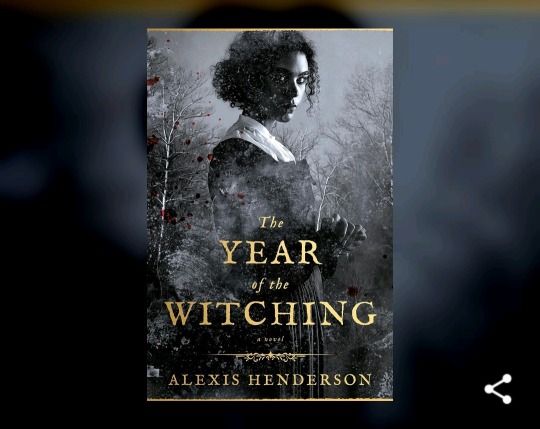
In the lands of Bethel, where the Prophet’s word is law, Immanuelle Moore’s very existence is blasphemy. Her mother’s union with an outsider of a different race cast her once-proud family into disgrace, so Immanuelle does her best to worship the Father, follow Holy Protocol, and lead a life of submission, devotion, and absolute conformity, like all the other women in the settlement.
But a mishap lures her into the forbidden Darkwood surrounding Bethel, where the first prophet once chased and killed four powerful witches. Their spirits are still lurking there, and they bestow a gift on Immanuelle: the journal of her dead mother, who Immanuelle is shocked to learn once sought sanctuary in the wood.
Fascinated by the secrets in the diary, Immanuelle finds herself struggling to understand how her mother could have consorted with the witches. But when she begins to learn grim truths about the Church and its history, she realizes the true threat to Bethel is its own darkness. And she starts to understand that if Bethel is to change, it must begin with her.
#vavuskapakage#goodreads#the grace year#kim liggett#the handmaid's tale#extasia#claire legrand#feminist books#young adult#young adult fiction#young adult fantasy#margaret atwood#Vavuskabooks#lgbtq#book review#book reviews#book recommendations#lgbtq fiction#alexis henderson#The Year Of The Witching#fantasy books#fantasy#horror books#witch books#witchcore
27 notes
·
View notes
Text
It's like Maleficent, but they are lesbians 💖



The princess isn't supposed to fall for an evil sorceress. But in this darkly magical retelling of Sleeping Beauty, true love is more complicated than a simple fairy tale. Perfect for fans of Naomi Novik and Holly Black.
'Malice is the dark and wicked heart of a fairytale carved into a book. This story is beautiful, vicious magic.'
Tasha Suri, author of Empire of Sand
'A truly original and clever retelling of a classic that had me racing to the end - you'll never look at Sleeping Beauty the same again.'
S.A. Chakraborty, author of City of Brass
Once upon a time, there was a wicked fairy who, in an act of vengeance, cursed a line of princesses to die. A curse that could only be broken by true love's kiss.
Utter nonsense.
Let me tell you, no one in Briar cares what happens to our princess. I thought I didn't care, either. Until I met her.
Princess Aurora, last heir to the throne, the future queen her realm needs. One who isn't bothered that I am Alyce, the Dark Grace, abhorred and feared for the mysterious dark magic that runs in my veins. But with less than a year before the curse kills her, any future I might imagine for us is quickly disappearing - and she can't stand to kiss yet another idiotic prince. But maybe I can help her. If my power began the curse, it might be the one to lift it. Perhaps, together, we could forge a new world.
But we all know how this story ends. Aurora is the beautiful princess.
And I am the villain.
Credits: @kimocchika
You can find her original post here: [X]
My GoodReads: [X]
#vavuskapakage#Vavuskabooks#Maleficent#Malice#heather walter#fantasy books#lgbtq representation#lgbtq fiction#lgbtq fantasy#sleeping beauty#fairy tale adaptation#lgbtq+ representation#lgbtq+ books#lgbtq books#sapphic novels#sapphic fantasy#sapphic books#Malice by Heather Walter#young adult fantasy#ya fiction#young adult#malora#maleficent
68 notes
·
View notes
Text
Dawes only smiled. “Come on,” she said to Tripp. “We’ll get you to Il Bastone and I’ll see what I can find to feed you.”
“Oh man, thank you. Thank you.”
“But you’re going to have to change,” Alex said.
“Of course. I know I haven’t been the most responsible member of the team, but I believe in transformative growth—”
“Clothes, Tripp. You’re going to have to change your clothes.”
“Shit, man! Absolutely. What did I say? You’re all right, Alex.” He put up his hand for a fist bump. “I just really want to eat you.”
Alex nudged her knuckles against his. “I know, buddy.”
Leigh Bardugo, “Hell Bent”
Discover more on my GoodReads: [X]
#vavuskapakage#Vavuskabooks#hell bent leigh bardugo#leigh bardugo#galaxy stern#alex stern#darlington#Dowes#pamela dawes#dawes#Tripp#tripp helmuth#book quotes#book#bookblr#2023 books#horror books#fantasy books#urban fantasy
57 notes
·
View notes
Text

Black Butler — 黒執事 Kuro shitsuji, Chapter 111. "That Butler, A Thief" (その執事、泥棒, "Sono Shitsuji, Dorobō")
#vavuskapakage#vavuskabooks#manga and stuff#manga panel#black butler#kuroshitsuji#sebastian michaelis#cat lovers#cat daddy#Goth love cats#black butler manga
36 notes
·
View notes
Text

The dead of Loraille do not rest.
Artemisia is training to be a Gray Sister, a nun who cleanses the bodies of the deceased so that their souls can pass on. She’d rather deal with the dead than the living, who point and whisper about the odd girl who was once possessed by a violent spirit.
When her convent is attacked by possessed soldiers, Artemisia fights back by awakening an ancient spirit bound to a high saint’s relic. It is a revenant, a malevolent being now whispering in her head. Wielding its extraordinary power almost consumes her in body and soul. But death has come to Loraille, and only a vespertine, a priestess trained to wield a high relic, has a chance of stopping it.
As Artemisia investigates a mystery of saints, secrets and dark magic, an ancient evil is stirring. Can an untrained girl, tormented by the burden of containing the revenant’s devouring power, have any hope of defeating it?

The complete Book of the Ancestor Trilogy, a stunning epic fantasy series by Mark Lawrence!
Red Sister:
At the Convent of Sweet Mercy, young girls are raised to be killers. In some few children the old bloods show, gifting rare talents that can be honed to deadly or mystic effect. But even the mistresses of sword and shadow don’t truly understand what they have purchased when Nona Grey is brought to their halls.
Grey Sister:
Behind its walls, the Convent of Sweet Mercy has trained young girls to hone their skills for centuries. In Mystic Class, Novice Nona Grey has begun to learn the secrets of the universe. But so often even the deepest truths just make our choices harder. Before she leaves the convent, Nona must choose which order to dedicate herself to—and whether her path will lead to a life of prayer and service or one of the blade and the fist.
Holy Sister:
The ice is advancing, the Corridor narrowing, and the empire is under siege from the Scithrowl in the east and the Durns in the west. Everywhere, the emperor’s armies are in retreat.
Nona Grey faces the final challenges that must be overcome if she is to become a full sister in the order of her choice. But it seems unlikely that she and her friends will have time to earn a nun’s habit before war is on their doorstep.
This two books are very similar: both the protagonists, Artemisia in Vespertine and Nona in The Book of Ancestor, are orphans raised in a female-dominated holy place, trained in their ways. Both became possessed by devious spirits at some point of the story and both are reluctantly call to save the day. Both the characters are highly influenced by the traumas they endured (physically and psychologically) but while Artemisia — at the beginning of the book — is more isolated and lacks of friends, Nona, despite her more feral nature, is more easily going with people who became loyal friends to her. Both in Vespertine and Book Of Ancestor Trilogy there's a great curruption in the secular and religious hierarchies, but while in Vespertine those religious authorities are victims in their own way, in Book Of Ancestor the corrupted spiritual leaders are more mundane and their action are plotted by the political plans and ambitions of the royal family members.
The main difference is that Artemisia is not a warrior herself: when the convent is attacked by possessed soldiers (Revenants), she takes up a reliquary kept by an elderly nun and, thanks to the spirit that resided there, she runs into the fight, saving the day. Afterward, she is arrested by a priest — probably a future love interest — in conflict with himself and his religious beliefs.
There are a handful of supporting characters with their own special traits: a soldier who experienced a similar trauma to what Artemisia went through as a kid, whom she's able to connect with and help; a fellow nun from the convent who is very different from Artemisia (I appreciated their enemies-to-friends relationship, and her cleverness); and a grouchy but powerful elder who you can't help but adore (which is very similar to the cunning Abbess who took Nona under her care) .
The Revenant is an interesting character, who is supposed to be evil, and it is in some ways, but it’s also caring: it's the revenant that taught Artemisia to take care of herself, to consider herself worthy of being cared for.
Artemisia isn't as kickass as Nona ––many of the badass moments were due to the revenant controlling her––but she has her strengths. I appreciated that she grew to trust and care for the revenant despite how she was raised, and that she was able to push out of her comfort zone at times. It's nice to see how people in similar situations can turn out differently based on their individual experiences.
Book of the Ancestor, on the other hand, follows the growth of young Nona Grey, adopted into a convent of nuns known for their martial and magical skills. Nona and her friends must learn how to utilize the magic of their world to hopefully save their empire. Nona’s story, as she taps into her own potential and makes peace with herself — and the violence within her — is well-written and the self-immersion in her thoughts is cathartic and immediate.
The world of Book of the Ancestor deserves special attention. It is, in my reading, wholly unique. Giant ice sheets are slowly covering the world, squeezing nearly the entire population of the world into a narrow strip of land. It's a fascinating concept and becomes a major part of the series.
Overall, I enjoyed the series. It's fast-paced with characters that I came to enjoy (more on that in a moment). The books have a fun magic system that leads to excellent pay-offs in each of the books, and Lawrence plays with time, too, keeping the tension high throughout the stories.
I'm not a huge fan of magical academy tropes, which are very prevalent in Book Of The Ancestor (like the first book of the The Poppy War Series by R. F. Kuang). There are occasional moments of familiar tropes (there is a brief period where the book seems like it is aping the story of the first Harry Potter book beat for beat; luckily, that quickly fades out), but in the end, Nona and her friends more than turn this into their own story…helped by the fact that this most definitely isn’t a Chosen One story. Indeed, within the first few chapters, it’s revealed that the Chosen One prophecy of this world is hokum designed to distract people – and it’s that sort of decision that makes Book Of Ancestor a great trilogy.
In Book Of Ancestor, magic and supernatural abilities are more common and accepted, while in Vespertine is more marginal, at the point that only elderly nuns have a deep knowledge of the precious powers of the reliquary that they kept.
Nona Grey is also very similar to Rin from The Poppy War Series by R. F. Kuang: high skilled warriors, dominated by their fury, but loyal to their friends, used as weapons by powerful authorities. Even if Rin, at the end, falls victim of her rage and is more eager to be manipulated than Nona, who seems to be unaware of the deeper meaning of her own battles all the time and just follows the Abbess' indications.
And also the detailed distinction made by Lawrence of the four tribes and their powers reminds me of the one created by Susan Dennard in her Witchlands saga, in which every nation has their own elemental-related talents.
#vavuskapakage#The book of the ancestor trilogy#Nona Grey#vespertine#margaret rogerson#mark lawrence#the witchlands#witchlands#susan dennard#r. f. kuang#The Poppy War Series#the poppy war#fantasy#book review#bookmark#book reviews#bookblr#fantasy books#Vavuskabooks#goodreads
9 notes
·
View notes
Text
How I look like when I ship book's characters together:

#vavuskapakage#Vavuskabooks#hell bent leigh bardugo#hell bent#leigh bardugo#galaxy stern#alex stern#tripp helmuth#pamela dawes#book memes#ninth house#paranormal romance#urban fantasy#young adult fantasy#books and reading#booklr
41 notes
·
View notes
Text
Pamela Dawes, who had no idea what it meant to hurt so much to live you might wake up one morning ready to die. And Alex was glad of that. People shouldn’t have to march through the world fighting all the time.
“Hell Bent”, Leigh Bardugo
Discover more on my GoodReads: [X]
#vavuskapakage#leigh bargudo#hell bent#hell bent leigh bardugo#alex stern#book quotes#bookblr#Vavuskabooks#fantasy books#horror books#2023 books#galaxy stern#pamela dawes#dawes#urban fantasy
41 notes
·
View notes
Text
I'm still mad with Libba Brey for murdering Mabel.
27 notes
·
View notes
Text


It's not important if your nickname is Don Quixote rather than Tyler Durden, because both of them have something in common: they make automatically your argumentations invalid. Don Quixote was insane and had hallucinations, while Tyler Durden is the hallucination produced by a disturbed mind.
On one hand Don Quixote lives in a mythologized past that never existed and, instead of trying to understand the evolutions of society and questioning his “ancient” way of thinking, he escapes from a reality, a present that he doesn't understand anymore (or doesn't feel as his own), on the other hand Tyler Durden is the unrealistic ideal of masculinity diffused by media and created by the same consumeristic and capitalistic culture Tyler Durden fights. They are both illusions, intrinsically contradictory falsehoods.
#vavuskapakage#chuck palahniuk#fight club#tyler durden#don quichotte#don quixote#don quijote de la mancha#miguel de cervantes#brad pitt#edward norton#hegemonic masculinity#toxic masculinity#delusional#escapism#delusional disorder#vavuskabooks#classic#classic movies#classics#love books#bookshelves
7 notes
·
View notes
Text
REBLOGGING FROM A POST:
Jo Rowling’s new novel, THE INK BLACK HEART — part of her Cormoran Strike crime-thriller detective series penned under her Robert Galbraith pseudonym — involves; I shit you not, a storyline of a popular YouTube comic creator who sees her fandom turn on her after "SJW's" criticized the comic as racist and ableist, as well as transphobic. She is doxxed, receives death and rape threats for “having an opinion," and is found stabbed to death. The book, which is 1,000 pages long, aims at “social justice warriors” and suggests that she was a victim of a masterfully plotted, politically fueled hate campaign against her by fourth-wave feminists and trans activists.
She has lost her damn mind. The level of self-insertion, projection, irrational self-pity, and victimhood is genuinely epic.

Here you can find reviews about her precedent books published as Robert Galbraith: X
Check my GoodReads for more: [X]
#vavuskapakage#jk rowling#jk rowling is trash#jk rowling is a transphobe#robert galbraith#cormoran strike#book#bookblr#book review#book reviews#the ink black heart#vavuskabooks
38 notes
·
View notes
Text
“Depressive,” Evie said, testing the word on her tongue. “I didn’t know there was a name for that feeling. Like there’s a rain cloud in your soul.” She knew that feeling well. Sometimes she was the life of the party. But other times she was lonely, bleak, and sick with disgust at herself, and certain that the people who said they loved her were only pretending. She called these times the “too muches”: too much feeling, like opening a door and seeing, really seeing, into some deep, existential loneliness underlying everything. When the “too muches” arrived, Evie feared that whatever hope lived inside her would drown from the storm of her own aching sadness.
Libba Bray, “Before the Devil Breaks You.”
Check my GoodReads for more: [X]
#vavuskapakage#book quotes#books#libba bray#the diviners#Before the Devil breaks you#depression#sorry for being depressing#depressing quotes#vavuskabooks#fantasy romance#urban fantasy#paranormal romance#young adult fantasy#historical fantasy#Vavuskabooks
13 notes
·
View notes
Text
Demon Cycle by Peter V. Brett - All Characters POV Symbols
1. Arlen Bales "The Painted Man" (former Messanger / The Deliever)

2. Rojer Inn - "Rojer Halfgrip" (Jongleur)

3. Leesha Paper (Herb Gatherer)

4. Ahmann Jardir - "Shar'Dama Ka", title analog to The Deliever, it means "First Warrior Cleric" (Sharum Ka, "First Warrior')

5. Renna Tanner

6. Inevera - "Damajah", title that means First Wife of the Shar'Dama Ka (Dama'Ting, Priestess)
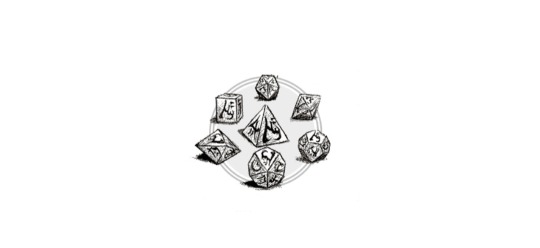
7. Abban Haman - "Khaffit" (Merchant)

Art by Dominik Broniek
#vavuskapakage#peter v. brett#Inevera#Abban haman#Ahmann Jardir#Leesha Paper#Arlen Bales#Renna Tanner#The Painted Man#Rojer Inn#rojer#Leesha#Demon Cycle#Dominik broniek#The Warded man#The Daylight War#The Desert Spear#Renna Bales#Rojer Halfgrip#Vavuskabooks
7 notes
·
View notes
Text
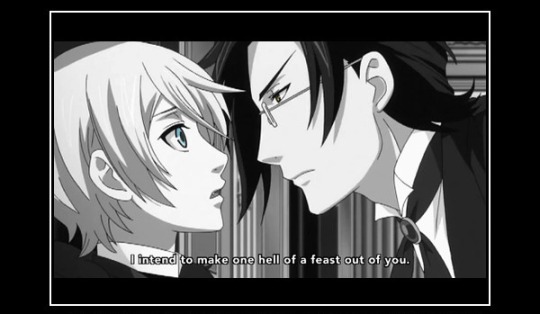
Bacio la mia albicocca dolcissima
(I kiss my sweetest apricot)
Mio amor
(My Love)
#vavuskapakage#vavuskabooks#black butler#manga and anime#kuroshitsuji#alois x claude#claude x alois#alois trancy#claude faustus#kuroshitsuji 2#kuroshitsuji ii
5 notes
·
View notes
Text
Criticism of Bram Stoker’s Dracula (1897) falls into three broadly related categories: class, race and sexuality. The first of these sees the novel as an example of bourgeois hatred of a parasitic aristocracy characterized as ‘blood sucking vampires’ that prey on the working class, while the second views the figure of the Count as the focus of fears concerning the decline and degeneration of the British race and xenophobic terror for the stranger, the immigrant who is seen as source of evil and devious criminal acts which were unknown in the civil British society before his arrival. The third category, which accounts for the bulk of writing on Dracula, is the emerging of the sexuality, which is demonazied and frustrated by repressive victorian society.
Check my GoodReads for more: [X]
#vavuskapakage#dracula#dracula bram stoker#bram stocker's dracula#dracula daily#vavuskabooks#horror books#horror fans#classical books#classism#xenophobia tw
48 notes
·
View notes